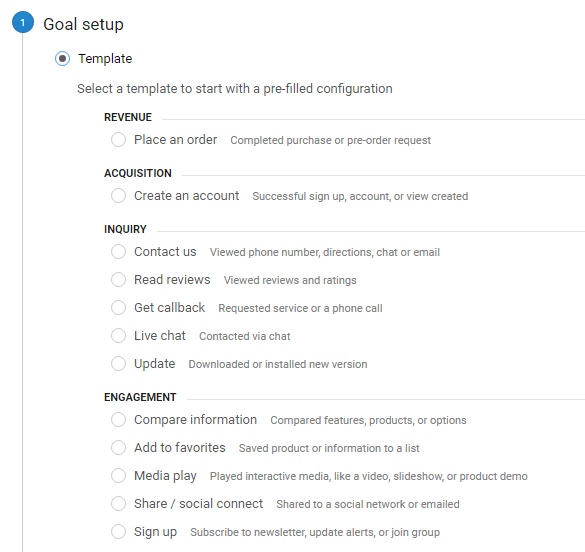What Data Is Google Analytics Goals Unable to Track: A Complete Overview
What Data Is Google Analytics Goals Unable to Track: A Complete Overview
Blog Article
Unveiling the Blind Spots: Recognizing What Google Analytics Goals Can not Measure
In the realm of electronic analytics, Google Analytics stands as a powerful tool for monitoring and examining on-line individual communications. Understanding what Google Analytics objectives can not determine is critical for acquiring a comprehensive view of customer actions and involvement.
Individual Habits on External Operatings Systems
Understanding how customers communicate on exterior platforms is critical for enhancing on the internet strategies. Exterior platforms, such as social networks networks, reference web sites, and on the internet discussion forums, play a significant role in driving website traffic to a business's internet site. By evaluating individual behavior on these systems, companies can get beneficial insights into the effectiveness of their advertising and marketing initiatives and the preferences of their target audience.
One key aspect of customer actions on outside platforms is the referral resource. By tracking where the customers are coming from, businesses can determine which systems are driving the most traffic to their web site. This info can assist firms assign their sources more properly, focusing on the platforms that generate the most effective results.

Offline Conversions and Interactions
Analyzing user actions on external systems gives useful insights right into on-line strategies; however, taking into consideration offline conversions and communications is equally vital for an extensive understanding of a company's total performance. While Google Analytics excels at tracking online communications, it drops short in capturing the total consumer journey that commonly includes offline touchpoints. Offline conversions, such as in-store purchases or phone inquiries, play a significant duty in numerous services' success. Overlooking these interactions can cause a distorted sight of the effectiveness of marketing projects and overall business performance.

Acknowledgment Beyond Last Click
When diving right into the world of digital advertising analytics, it becomes necessary to look past the solitary touchpoint of the last click for an extra extensive understanding of attribution. While Google Analytics offers beneficial understandings into customer behavior, relying solely on last-click attribution can be restricting - what data is google analytics goals unable to track. Acknowledgment models that go past the last click provide a more nuanced sight of the consumer trip, taking right into account all the touchpoints that result in a conversion
Attribution past the last click permits marketers to assign credit score to various communications along the conversion course, offering a more clear picture of the effectiveness of various advertising and marketing channels. By checking out multi-touch acknowledgment versions such as direct, time degeneration, or position-based acknowledgment, businesses can much Full Report better designate their marketing budget plans and maximize their approaches for optimal influence.
Comprehending the impact of each touchpoint in the conversion procedure is essential for making informed decisions and taking full advantage of ROI. By embracing attribution past the last click, services can gain much deeper insights right into consumer habits and tailor their marketing initiatives much more properly.
Cross-Device and Cross-Browser Tracking

In a similar way, cross-browser monitoring matches cross-device monitoring by catching customer actions as they switch in between various web browsers. Understanding exactly how customers connect with web sites on various browsers can help online marketers maximize their on the internet experiences to ensure uniformity and functionality throughout various platforms.
Qualitative Information and Customer Intent
Understanding customer intent with qualitative data analysis is critical for establishing targeted electronic advertising and marketing techniques that reverberate with the demands and preferences of the target audience. Qualitative data supplies understandings right into the 'why' behind customer actions, clarifying inspirations, feelings, and preferences that measurable data alone can not catch. By examining user responses, remarks, and communications, online marketers can reveal beneficial details about individual intent, enabling them to customize their messaging, web content, and offerings to better align with what their target market is Go Here looking for.
Qualitative data additionally aids in recognizing the context in which users engage with a web site or app. This contextual understanding enables online marketers to develop more personalized and pertinent experiences, inevitably driving greater involvement and conversion rates. By delving right into customer intent via qualitative data evaluation, organizations can obtain a much deeper understanding of site link their target market, resulting in much more reliable advertising and marketing methods that satisfy customers' demands and expectations.
Final Thought
In verdict, Google Analytics goals have restrictions in determining individual actions on exterior platforms, offline conversions, acknowledgment past last click, cross-browser and cross-device monitoring, and qualitative data connected to user intent. what data is google analytics goals unable to track. It is essential for organizations to be familiar with these dead spots in order to supplement their information evaluation with other tools and methods to acquire a much more comprehensive understanding of their audience and enhance their overall digital marketing techniques
By assessing customer actions on these platforms, companies can obtain beneficial understandings right into the efficiency of their marketing efforts and the preferences of their target audience.
Analyzing individual behavior on outside systems gives beneficial understandings into on the internet techniques; nevertheless, taking into consideration offline conversions and interactions is equally crucial for a detailed understanding of a business's total efficiency.In digital advertising analytics, relocating past last-click acknowledgment to discover cross-device and cross-browser tracking is crucial for gaining an all natural understanding of user interactions across various platforms and tools. By assessing customer responses, comments, and communications, online marketers can discover important information about customer intent, permitting them to tailor their messaging, material, and offerings to better line up with what their audience is looking for.
By delving right into user intent via qualitative data evaluation, organizations can obtain a deeper understanding of their target audience, leading to more effective advertising and marketing strategies that satisfy customers' requirements and assumptions.
Report this page